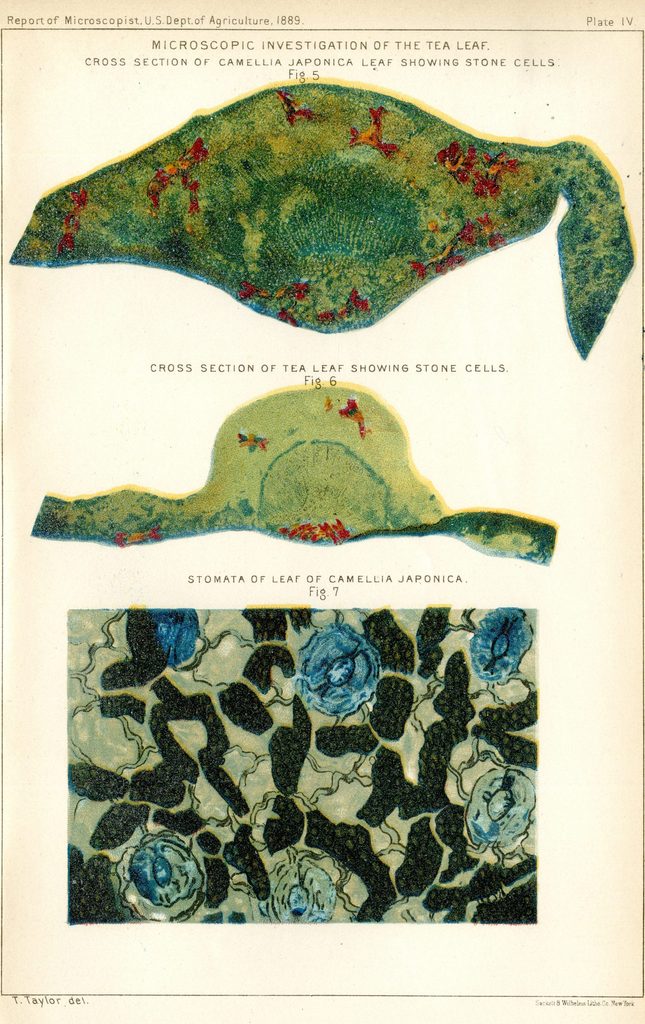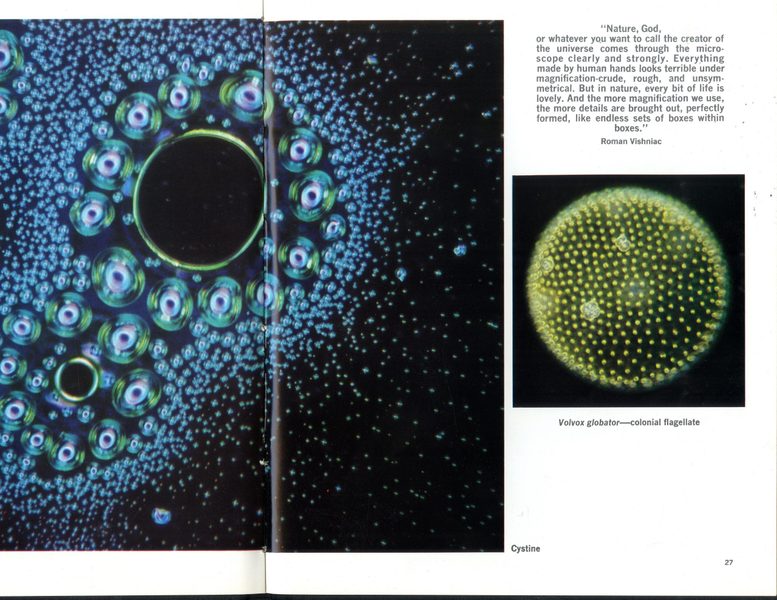
Lower Epidermis of Leaf Showing the Stomata and Chlorophyll Cells [Fig. 1]-
Microscopic Investigation of the Tea Leaf
Illustrated by T. Taylor
Printed by Sackett & Wilhelms Lith Co., New York
First Report of the Secretary of Agriculture- 1889
Washington: Government Printing Office, 1889
Gould Library Government Documents
The books on display here, all from the collections of Gould Library, reveal the beauty and order of hidden worlds. In these volumes, microscopic images are deployed for a variety of reasons: Sometimes their purpose is purely practical (to certify the purity of a sample of tea, or to facilitate the identification of diseased blood). In other cases, as in Felice Frankel’s close-up view of Velcro, their job is as much to inspire curiosity and wonder as it is to illustrate a scientific phenomena.
Volvox Globator-colonial flagellate and Cystine

[left] Cystine
[right] Volvox globator—colonial flagellate
Cornell Capa and Bhupendra Karia, editors
Roman Vishniac
ICP Library of Photographers
New York : Grossman Publishers, 1974
Gould Library Collections
“Nature, God, or whatever you want to call the creator of the universe comes through the microsope clearly and strongly. Everything made by human hand look terrible under magnification – crude, rough, and unsymmetrical. But in Nature, every bit of life is lovely.“
– Roman Vishniac
Perhaps best known for his documentary photographs of Eastern European Jews in the 1930s and 1940s, Dr. Roman Vishniac was a skilled and inventive scientific photographer as well. For Vishniac, images like this one depicting cystine, an amino acid, reveal the inherent beauty and order of the natural world.
1. p. 42




